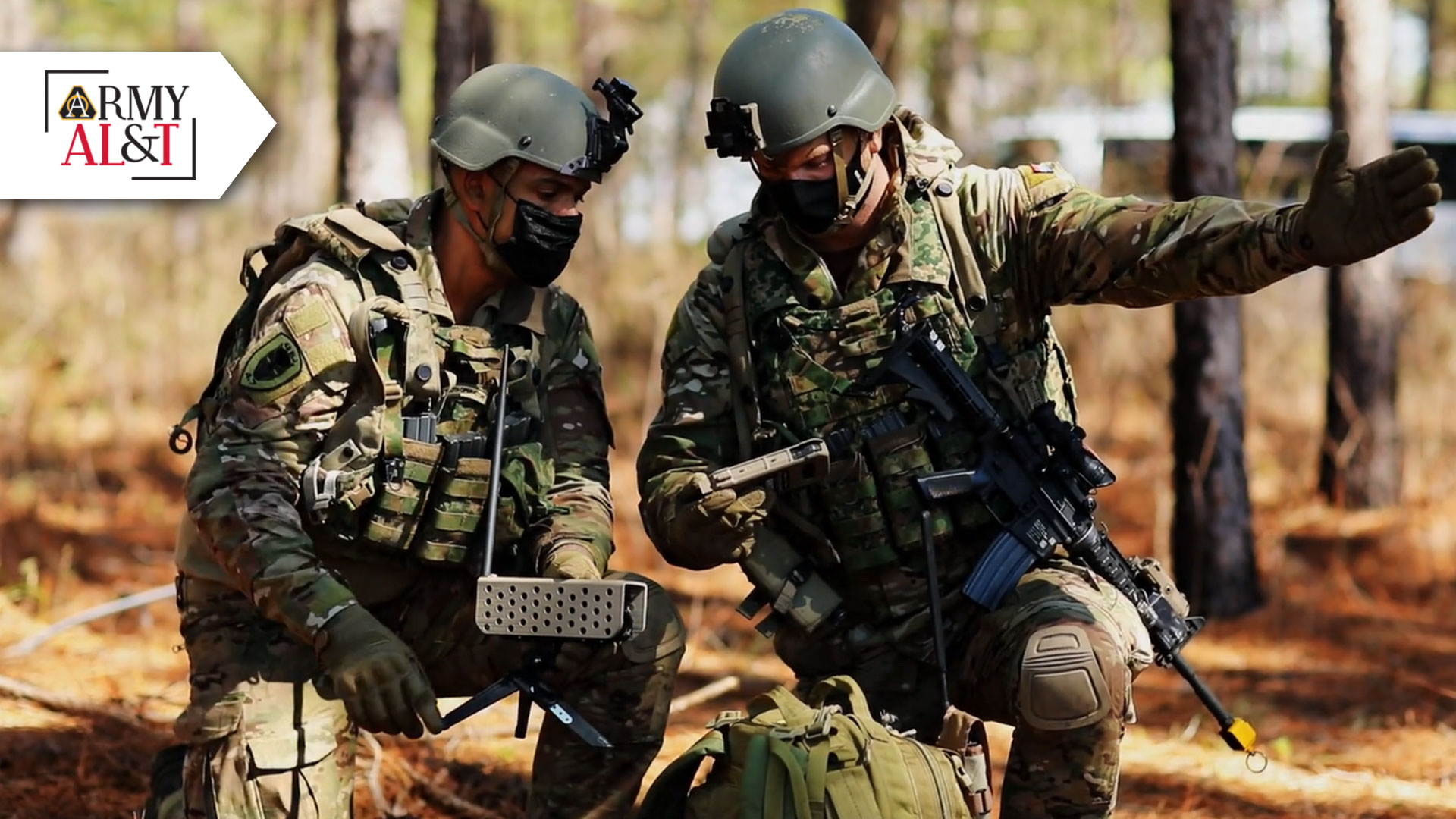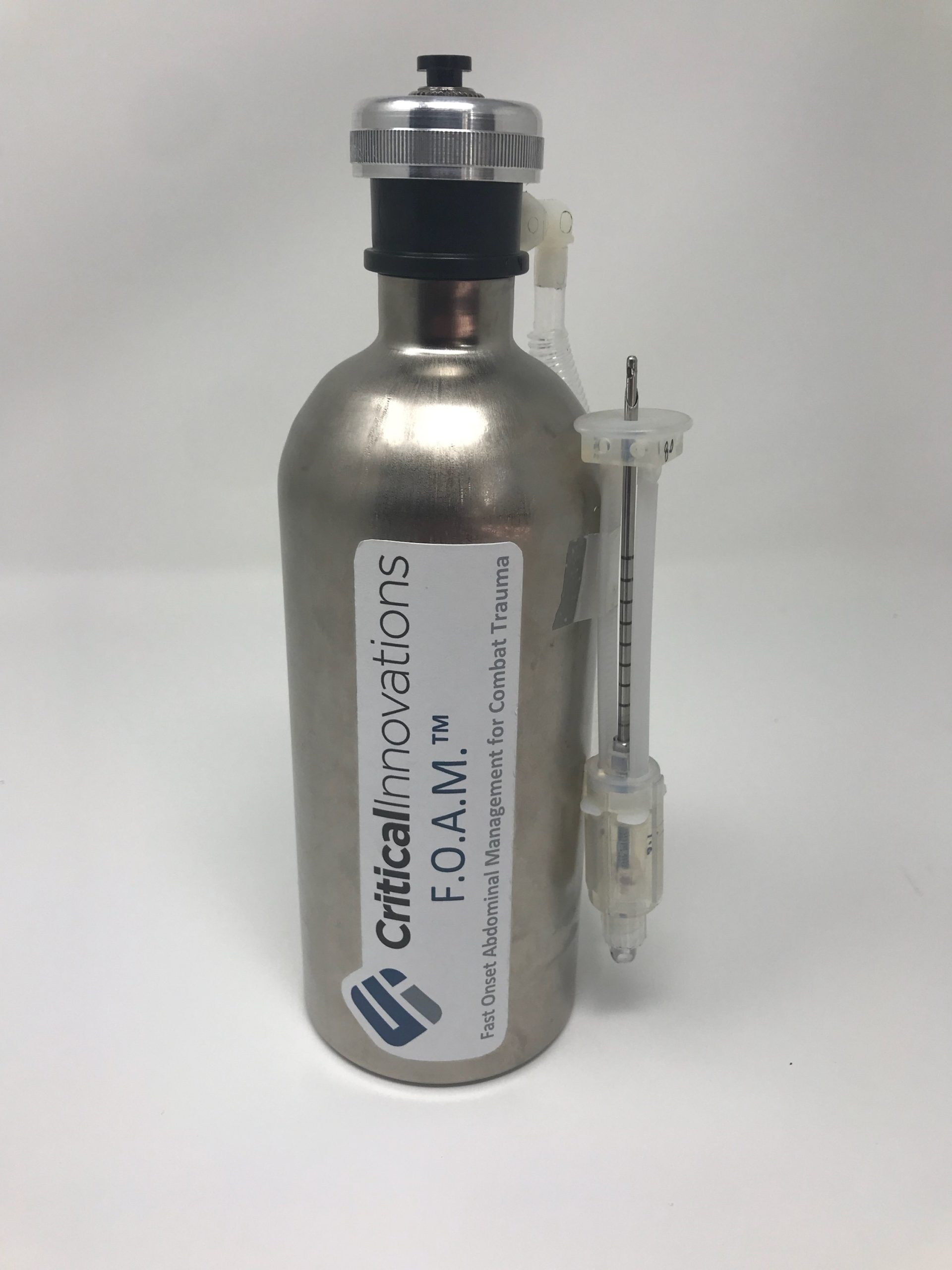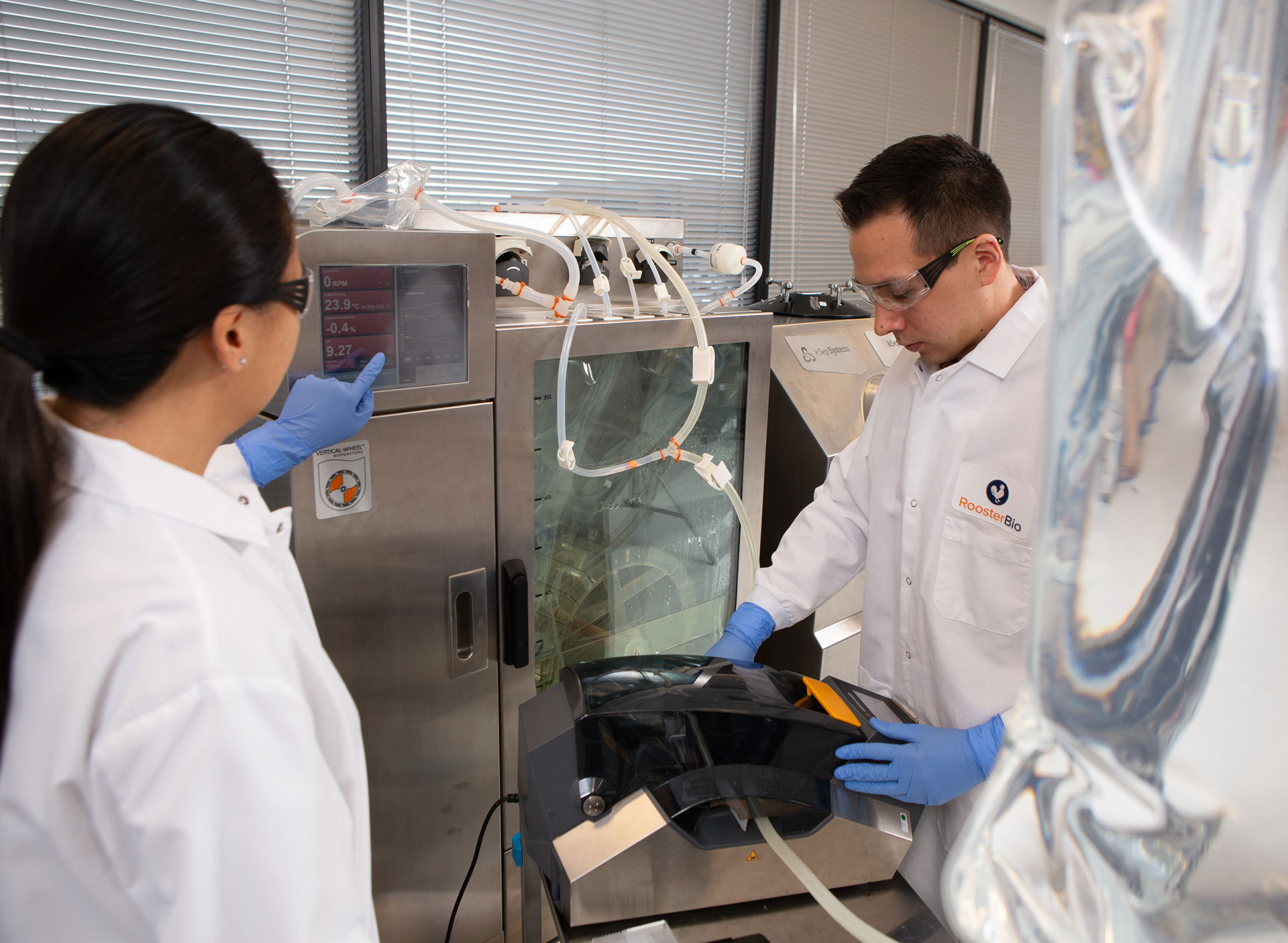
SUCCESSFUL DEMONSTRATION: Soldiers participate in the 2021 Army Expeditionary Warrior Experiment at Fort Benning, Georgia, in March. During this exercise, LifeLens Technologies successfully demonstrated the Ascent Platform as part of a fielding exercise. (Photo by William Norris, U.S. Army Training Support Center)
OTAs power USAMRDC with speed, options.
by Ramin A. Khalili and Sally Robey
As the nation’s military medical apparatus prepares for a future battlefield that will look markedly different than in previous conflicts, it also must develop the products required to sustain warfighter resilience in these emerging combat zones. In short, multidomain operations—the ability to defeat near-peer adversaries capable of contesting U.S. power across air, land, maritime, space and cyberspace—will be the key driver of medical innovation. It is here that the U.S. Army Medical Research and Development Command (USAMRDC) shines, as its unique set of acquisition capabilities allows the command to find, fund and—if need be—accelerate the development of products needed for the fight.
The foundation of USAMRDC’s success is its collaborative work with a number of partners across both industry and academia. For years, as part of the standard, tailored acquisition pathway, bilateral contracts have been the command’s primary means to get products to the warfighter. But there are notable exceptions. Specifically, the use of a special contracting tool called a consortium other-transaction authority (OTA) agreement helps USAMRDC move more quickly and nimbly through that pathway, increasing the speed at which Soldiers receive innovative medical technology. For that reason, the OTA has become a valuable player both inside and outside the command.
“We need to place cutting-edge technology quickly into the hands of the warfighter,” said Sara Langdon, USAMRDC’s program manager for other-transaction authority with the Medical Technology Enterprise Consortium (MTEC). “It is vital that we partner in order to fill our medical capability gaps, and OTAs help us to accomplish this.”

QUICK TURNAROUND: Critical Innovations LLC, the company behind the prototype Fast Onset Abdominal Management (F.O.A.M.) hemorrhage control application tool, was able to begin work on prototype delivery in just three to four months using $600,000 in base OTA funding through MTEC. (Photo by Critical Innovations LLC)
A NEW WAY OF DOING BUSINESS
USAMRDC received congressional authority to begin using the OTA in 2014 to facilitate the delivery of advanced technology and therapeutic prototypes for a wide array of military-relevant medical and health conditions. What separates the OTA from other standard contracting mechanisms—and what has become one of its defining characteristics—is that it allows for increased speed and flexibility for both parties. Notably, it aims to set chosen projects in motion in mere months and allows for complex collaborations. This is made possible by the OTA mechanism’s reliance on nontraditional defense contractors and a built-in flexibility in data rights and regulatory terms. Additionally, other-transaction agreements allow for more conversation between DOD and the performer, as compared with traditional Federal Acquisition Regulation-based contracts.
Within USAMRDC, most of the other-transaction agreements focusing on prototypes are currently awarded through the Medical Technology Enterprise Consortium program, which is a 501(c)(3) nonprofit corporation consisting of more than 540 industry and academic member organizations. MTEC members are committed to developing medical tools that better manage, prevent, diagnose, treat and rehabilitate a wide range of injuries. This kind of consortium-based approach facilitates an environment for frequent interaction between military sponsors, academic institutions, nontraditional defense contractors and large businesses to communicate what the military is looking for in any particular product. Combining such a large cadre of experts with the enhanced transparency offered by the OTA has, by design, made for a substantial impact.
“The consortium concept is where we gain so much value. MTEC brings key medical development components together with various vendors, industry partners and academia to help us get to that end goal without having to piece those puzzle pieces together and hope for the best,” said Dawn Rosarius, USAMRDC’s principal assistant for acquisition, regarding the transparency offered by the process. “It actually does that up front and helps coordinate the outcome with all the right components, right from the beginning.”
“The [consortium] mechanism is supportive to our partners and awardees, in that MTEC engages with foundations and venture capitalists to support the MTEC members by bringing additional expertise and funding to the table,” said Langdon. “This is important because the military can’t benefit from a technology they need if the company that owns the research or technology goes under or is not viable.”
When dealing with nontraditional defense contractors, employing an OTA agreement can reduce some regulatory burdens so that small and emerging technology providers can work with the government. Access to nontraditional defense contractors through MTEC—especially small businesses that may not have the manufacturing capabilities or the regulatory experience of larger, more traditional contractors—can help widen what MTEC calls the “aperture of innovation,” which is typically not available under standard FAR-based contracting. Such outreach takes place in a variety of settings: scientific meetings, military meetings like the annual Military Health System Research Symposium, investor pitch sessions, and even via partners in the venture capital world, among others.
Further, OTA agreements give companies the opportunity to team with one another to provide more complete proposals that better meet the government’s technical requirements. To that end, MTEC facilitates virtual or in-person meetings between both parties to help members develop a proposal that brings together complementary capabilities to meet the sponsor’s technical needs.
MTEC IN ACTION
An example of the OTA in action can be seen in the development of the Ascent Platform, a wearable sensor technology from LifeLens Technologies, that’s designed to enable Army leaders to monitor the health status of Soldiers. Supported by the Warfighter Health, Performance and Evacuation Project Management Office within the U.S. Army Medical Materiel Development Activity (a subordinate unit of USAMRDC), and funded through MTEC, LifeLens Technologies successfully demonstrated the Ascent Platform during the Army Expeditionary Warrior Experiment at Fort Benning, Georgia, in early 2021. The platform was used to capture data from 48 missions over the course of the event, reporting zero field failures in the process. As it stands now, the LifeLens Technologies team will use the data gathered from the event to plan for subsequent fielding with the project management office.
“Using the OTA for wearable sensors has been extremely successful for our teams,” said Rosarius. “We are seeing the value of this tool in the sensor and other areas for both our researchers and [program managers] to assist in avoiding injuries and ultimately saving lives.”
Since MTEC became fully operational in January 2016, USAMRDC has awarded more than 160 different prototyping projects through it with more than $550 million in government funding. With such an established record of success, the command now focuses on the next step, the next hurdle to clear. How does USAMRDC keep pace with not only changing military landscapes on one side of the equation, but also near-constant technological improvements on the other? For Rosarius, the answer is constant innovation.
“I think we can go forward much faster,” she said. “I think technologically, there’s so many opportunities out there; a lot of it is going to be IT, network, tele-driven in the future. There’s so much technology from industry, academia and our own expertise to piggyback on.”
Langdon notes that just this year, MTEC developed a unique commercialization program that provides outreach, education, mentoring, networking services and investment support to MTEC members; all of which will likely be integral to a sustained environment of innovation.
“With these service offerings, MTEC aims to help align innovators with military priorities and capabilities to ensure the success of their products into the commercial arena and provide or support good health and wellness to the warfighter,” Langdon said.

LEADING THE WAY: OTA agreements issued through MTEC allowed RoosterBio Inc. to enter into collaborative efforts with the U.S. Army Institute of Surgical Research and others to produce the assays and large-scale bioreactor system designed to deliver clinic-ready mesenchymal stem cells derived from human bone marrow. (Photo by RoosterBio Inc.)
CONCLUSION
That is, of course, the ultimate focal point—the sustained health and resilience of the warfighter. For USAMRDC, the future of contracting is a constant and consistent opportunity to benefit DOD as a whole—a future informed by previous success and the potential for greater accomplishments in the coming years.
“I think the opportunity for us—because we all tailor to what is needed with our programs—is to think about how we can get solutions to the field faster,” said Rosarius. “Don’t get hung up in all the ways we used to do business, think about the ways we can do business better.”
For more information about USAMRDC go to https://mrdc.amedd.army.mil/. For more information about MTEC go to https://www.mtec-sc.org/.
RAMIN KHALILI is a writer with USAMRDC’s Public Affairs Office. Before assuming his current role, he spent five years as the knowledge manager for USAMRDC’s Combat Casualty Care Research Program. During his previous work as a broadcast journalist, he earned an Associated Press Award for his work in Phoenix before serving as chief NASA correspondent for CBS in Orlando, Florida. He holds a B.A. in communications from Penn State University.
SALLY ROBEY is the Medical Technology Support Center program analyst for the USAMRDC OTA with MTEC. Previously, she spent five years as business development analyst in MRDC’s Outreach and Partnerships Office, where she identified and facilitated opportunities to promote the command’s research programs, points of entry and engagement processes. Her experience extends to private industry, for-profit, nonprofit and government clients supporting public-private partnerships. She received her B.S. in business administration, strategic management, from Towson University.


